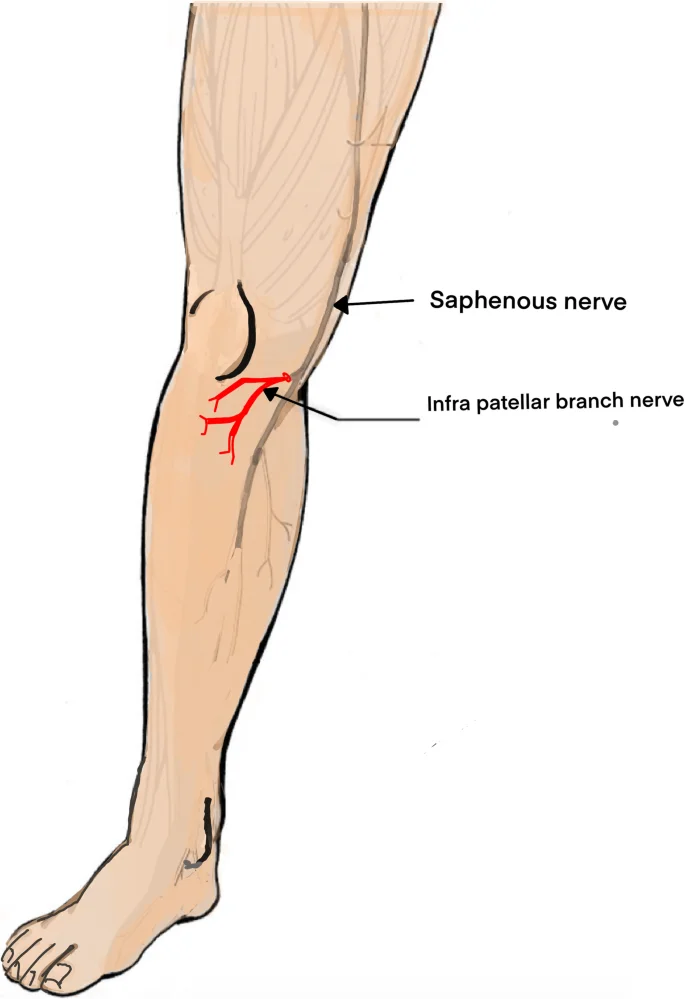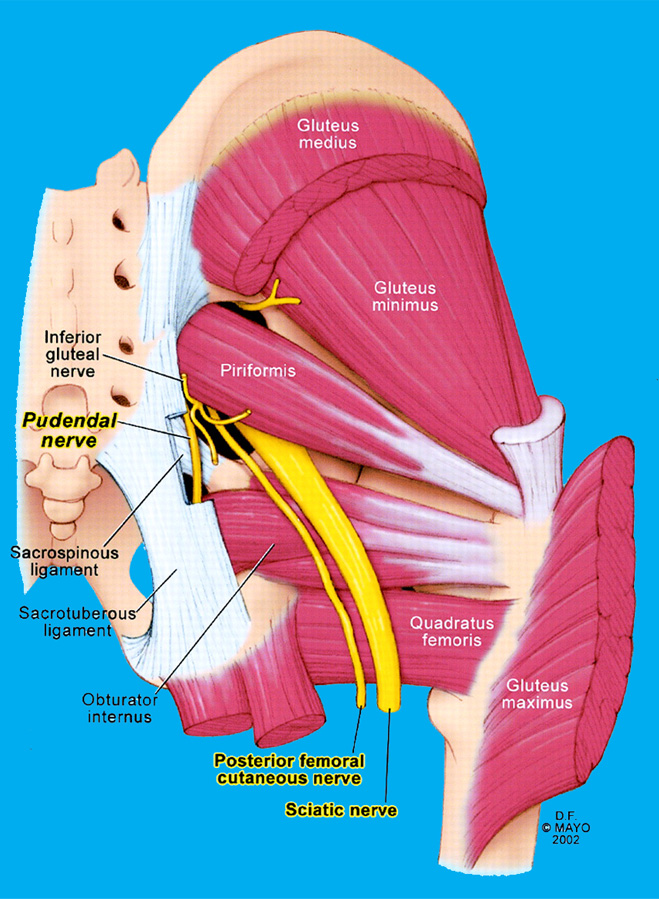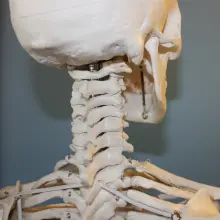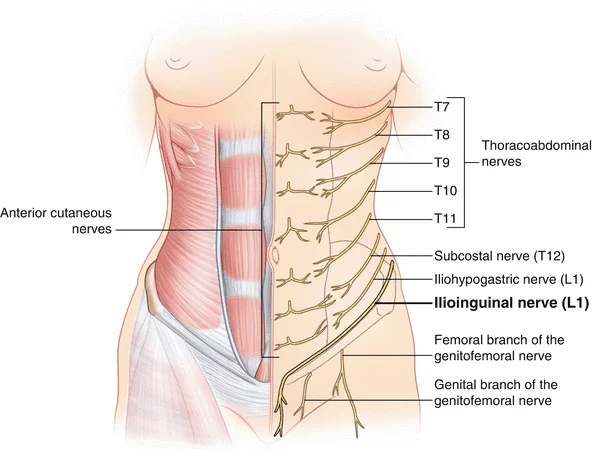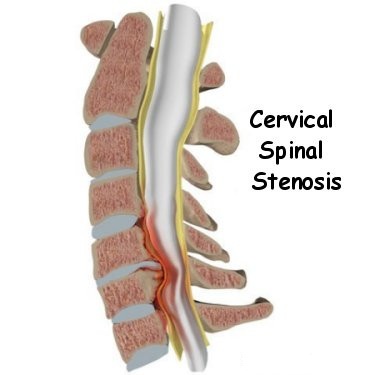Saphenous Nerve Entrapment
Saphenous nerve entrapments are rarely seen in which you feel chronic pain on the inside of the lower thigh, and knee area and throbbing sensation with or without tingling numbness.
It is also called Saphenous neuritis or Gonalgia Paresthetica.
- Your saphenous nerve runs below the back of your leg. It enables sensation in your knee, lower leg, foot & ankle. Injuries are untypical due to the nerve’s location deep within your leg. A procedure (saphenous nerve block) can quiet stubborn pain in these parts.
Table of Contents
What is the saphenous nerve?
- Your saphenous nerve is a sensory nerve that lies deep down within your leg. It is part of your peripheral nervous system, which helps your brain interpret, or “feel,” stimuli from your body & the environment.
What is the function of the saphenous nerve?
- Your saphenous nerve is a sensory nerve that transfers information about what your leg is feeling from your body & the environment up to your spinal cord.
It enables you to find:
- Leg position
- Pain
- Temperature
- Touch.
Where does it help me feel these things?
You have one saphenous nerve in each leg. Your saphenous nerve provides sensation to (innervates) your inner lower leg, involving the:
- Inside your ankle
- Inner calf muscle
- Inside the arch of your foot
- Lower knee.
How does the saphenous nerve participate in my well-being?
- Healthcare providers may use your saphenous nerve to transfer pain medications (nerve block).
A saphenous nerve block may be required to:
- Halt pain in an emergency,
- Numb your lower leg for a procedure,
- Treat lingering pain.
What is the anatomy of the saphenous nerve?
- Your saphenous nerve begins in an area of your upper inner thigh called the femoral triangle. It is a hollow area that allows important veins and nerves to travel down your leg.
- As your saphenous nerve passes through the femoral triangle, it passes through structures in your inner thigh (adductor canal).
- Leaving the adductor canal, it splits into the sartorial and infrapatellar nerve branches.
- The infrapatellar branch provides sensation to the part below your kneecap.
- The sartorial branch is ongoing past the knee.
- It splits again further down your leg, providing sensation to your lower leg, ankle, and foot.
What else is main to know about the saphenous nerve?
- In certain areas, your saphenous nerve runs parallel to your saphenous vein. The area of this vein can be surgically transferred to the heart to restore blood flow in people who have coronary artery disease. This procedure is called coronary artery bypass graft (CABG) surgery.
What conditions affect the saphenous nerve?
- The saphenous nerve’s location deep within your leg protects it, making injuries unusual.
Conditions that can cause saphenous nerve pain to involve:
- Entrapment (pinched nerve), which happens when there’s abnormal pressure on a nerve.
- Trauma involves deep cuts on your leg.
- It’s possible to experience saphenous nerve harm due to complications of certain surgeries.
These involve:
- ACL (anterior cruciate ligament) tear reconstruction repairs harm to the ligament holding your knee in place.
- Ankle surgery treats conditions such as broken bones, serious arthritis, and nagging tendonitis.
- Cardiac catheterization diagnoses and treats heart issues by inserting small instruments through an incision in your groin.
- Coronary artery bypass graft (CABG) surgery conducts a section of your leg artery to your heart to restore blood flow.
- Knee arthroscopy evaluates & treats & managements knee issues using a thin instrument with a camera at the tip.
- Meniscus injury repair treats torn cartilage in your knee.
- Varicose vein stripping removes unsightly veins that are not functioning properly.
What is saphenous nerve entrapment syndrome?
- Saphenous Nerve entrapment is an infrequent condition that is caused by chronic irritation to the saphenous nerve. The irritation can happen due to several reasons with the most common being compression of the nerve along its path. The most usual place that entrapment will occur is at the outlet of the adductor canal.
What are the causes of saphenous nerve entrapment syndrome?
- The cause of saphenous nerve entrapment can be direct through trauma like a rotational injury or from compression for example a dashboard injury. The saphenous nerve can be indirectly affected through lumbar disc disease, meniscal tear, or post-surgery. Most usually during a total knee replacement.
- DIRECT: Trauma (for example rotation injury) Direct contact: like compression (for example Dashboard injury) Cut-incision Scar-synovial Resection Stretch PLRI (Posterolateral Rotator Instability).
- INDIRECT Reflex of Sympathetic dystrophy, Fibromyalgia, Lumbar Disc Disease, Degenerative joint disease of the knee, Meniscal tear, Surgery.
- Neuropathic knee pain (particularly of the infrapatellar branch of the Ramus Infrapattelaris), is a main complication of knee replacement surgery, with an incidence as high as 70%. The improving number of elderly patients requiring knee surgery, including total knee arthroplasty (TKA), has contributed to an improvement in the number of patients with this pathology. Treatment involves neurectomy, infiltration therapy, and cryodenervation. Percutaneous cryodenervation of the infrapatellar branch is a promising choice.
What are the symptoms of saphenous nerve entrapment syndrome?
- Saphenous Nerve entrapment is represented as pain on the inside of the thigh, knee, or calf. The pain is represented as dull and achy pain and it may have a burning or electric type feel. Pressure on the inside of the knees will aggravate sensations like having something resting on the person’s lap. Additionally, walking, sitting, or climbing stairs can be painful.
- The pain is especially detected in response to limb movements that cause nerve stretch.
- Pain characterized by saphenous neuritis is mostly activity-related pain, yet it can also be characterized as rest pain.
- Clinical research looks at elective pressure pain in the canal of Hunter (Adductor Canal) at the height of the medial thigh.
- It can find diffuse tenderness at the medial structures and at the pes anserinus.
- This pathology can appear beside other usual problems, such as osteoarthritis or patellofemoral pain syndrome.
- The clinical appearance of saphenous neuritis is characterized by allodynia along with the nerve.
- Many studies concluded that it is very main to know the anatomy of this nerve to evaluate and treat saphenous neuritis correctly. There are various causes of saphenous neuritis.
- The most usual cause is the compression of the nerve, along its anatomic course, the Adductor Canal.
- The pain is most sensible at the joint line associated with hyperaesthesia or hypoaesthesia on the medial side of the lower leg (knee) when it is caused by compression.
How do we assess for it?
- When we are looking to assess this condition there are certain key findings we are after. Firstly, the pain is located on the inside of the knee and it only appears with exercise or when the saphenous nerve distribution is lightly palpated, most often at the adductor canal, the medial joint line, or along the proximal third of the leg. Additionally, specific tests are conducted to stretch the nerve to look for a response or reproduction of the pain, the pain can be a dull ache or burning / electrical type feel.
How do we treat Saphenous Nerve Entrapment?
- Conservative treatment consists of numerous interventions involving activity modification, non-steroidal anti-inflammatory medications, exercise, and neural mobilization techniques.
- If symptoms persist anesthetic injections can be considered, although have certain suboptimal results thus far. If temporary or partial pain relief is obtained later in the injection, a second injection 3 to 4 weeks later with a corticosteroid may be considered. However, if symptoms do not increase a surgical approach should be considered. The surgical options involve neurolysis, decompression, and neurectomy.
When should I call a healthcare provider (doctor) about problems with my saphenous nerve?
- Contact your healthcare provider (doctor) if you experience signs of saphenous nerve entrapment or injury.
These involve experiencing any of the following in your inner knee, calf, or ankle:
- Dull, achy pain,
- Burning sensation,
- Muscle tightness,
- Shooting pain,
- Tingling and numbness.
Your healthcare provider may then refer you to a specialist or order a test of your saphenous nerve, known as electromyography (EMG).
NOTE
- Your saphenous nerve lies deep down within your leg. It supplies sensation to your lower knee, calf, ankle, and foot arch. Surgical complications are the most usual cause of saphenous nerve injuries. Your nerve is also utilized in saphenous nerve blocks, which relieve pain or numb the area so you can have a procedure. Seeking care from an experienced Doctor, or surgeon can decrease your risk of saphenous nerve injury.
Look for a surgeon who:
- Specialist Surgeon in the type of surgery you require.
- Takes time to get to know you & your medical history.
- Helps you understand why surgery is necessary and how it can assist.
- Regularly performs the procedure they are recommending.
FAQs
Symptoms of saphenous nerve entrapment may involve a deep thigh ache, knee pain, and paresthesias in the nerve’s cutaneous distribution in the leg and foot. The infrapatellar branch may become entrapped on its own because it passes through a separate (different) foramen in the sartorius tendon.
Nonsteroidal anti-inflammatory pain medications (NSAIDs) such as. ibuprofen (Advil, Motrin), …
Physical therapy.
Leg braces.
Medications that modify nerve pain such as. gabapentin (Neurontin) and. …
Opioid pain medications. …
Lidocaine patches.
Capsaicin cream.
Biofeedback.
The cause of saphenous nerve entrapment can be direct through trauma such as a rotational injury or from compression for example a dashboard injury. The saphenous nerve can also be indirectly harmed via lumbar disc disease, meniscal tear, or post-surgery. Most usually during a total knee replacement.
The saphenous nerve can become entrapped in so many locations along its long traveling area from the thigh to the leg. Usual sites of entrapment include the site where the nerve penetrates the roof of the adductor canal, or at the infrapatellar branch during knee surgery or varicose vein stripping surgery.
Bend the forward, taking your weight forwards onto it. This will improve the tension in the nerve. Oscillate this movement by bending & straightening the front leg. To improve the stretch, as you bend your knee, raise the arm on your harmed side up and over, whilst simultaneously extending your head backward.
Some nerve compression syndromes increase with nonsurgical treatments, such as:
Nonsteroidal anti-inflammatory drugs (NSAIDs) & steroid injections for pain & inflammation.
Physical and occupational therapy to increase strength and flexibility. …
Splints, braces, or orthotics to support the injured part.
While ulnar nerve entrapment is commonly not serious, it can have permanent consequences without prompt treatment, including paralysis and loss of feeling in the affected hand or arm. However, with proper diagnosis and treatment, most people with ulnar nerve entrapment can create a full recovery.
Treatments cited within the literature for saphenous nerve entrapments typically involve corticosteroid injection and surgical debridement of any fibrous tissue surrounding the nerve.

